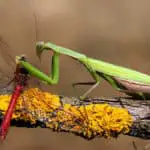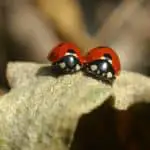My lemon tree is infested by caterpillars every now and then. I thought, why don’t I get my 6 years old child to start a butterfly rearing project? So, we collected the caterpillars and rear them at home. Follow through this guide if you are interested to try keeping butterflies or moths from your backyard with your kids.
To keep butterflies and moths, handpick the caterpillars from the vegetation in your backyard. Place the caterpillars in a ventilated deli container. Put a layer of paper towel on the bottom of the container. Feed the caterpillars with leaves on which they were found. Replenish the leaves whenever they get dried or consumed. The caterpillars molt several times before turning into pupae and emerging into butterflies. Adult butterflies can be housed in a big mesh cage and provided with 10% syrup or released to where they were captured.
Butterflies and moths are perhaps the easiest insects to keep (except for some species), where kids can handle them with little help. Moreover, it helps your kids to understand and appreciate nature better.
Basic Introduction to Butterflies or Moths
Butterflies and moths are insects under the order lepidoptera. There are 4 stages in the life cycle of butterflies or moths: eggs, larva (caterpillar), pupa (chrysalis), adult.
The caterpillars spend all their time feeding. Once they have gathered enough nutrients and energy, they turn into chrysalis. Some caterpillars build and encase themselves in a cocoon before turning into pupa. The cocoon can be made of silk excreted by the caterpillar, or built from leaves connected by silk. Some species do not form cocoons at all.
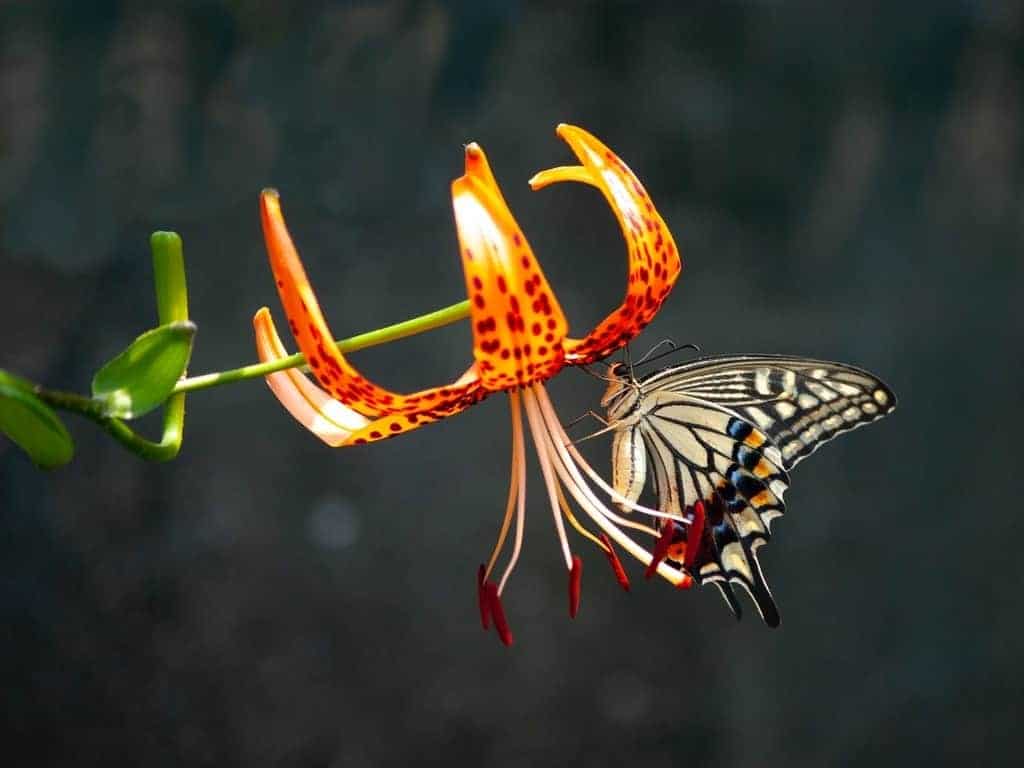
The chrysalis do not move nor eat. In this stage, the insect undergoes major changes in body structures and eventually emerges as an adult. Emerged adults feed on sugary food such as nectar. Adults of some species do not have mouthparts and hence do not live long. They typically die in a few days after laying eggs.
So what’s the difference between a butterfly and a moth? The table below lists the general differences between the 2. However, do note there are always exceptions! For instance, the Madagascan sunset moth is a colorful creature with slender antennae active at day time. It holds its wing vertically when resting.
| Characteristics | Butterfly | Moth |
|---|---|---|
| Color | Bright and colorful | Dull |
| Wings at rest | Closed/Held vertically | Opened/Held horizontally |
| Antenna | Slender | Feathery |
| Active hour | Day | Night |
Getting the Caterpillars from Your Backyard
It is actually quite hard to find caterpillars unless you have the host plants in your backyard. Not all plants attract butterflies or moths to lay eggs. For instance, only the lemon tree in my backyard attracts them.
There are 2 obvious evidences of the presence of caterpillars in your backyards. First, damage on the foliage in your backyard caused by caterpillars. Do note that some other creatures may also feed on foliage. Second evidence is the presence of brownish or blackish tiny balls (around 1-2 mm in diameter) on your foliage. Those are the droppings of caterpillars. It is not as obvious because they may have dropped onto the ground.
With the 2 clues above you can start searching for the caterpillars. When you find the caterpillar, collect it by cutting the leaves on which the caterpillars are found. I always hold the leaves instead of the caterpillars to avoid hurting them and myself (from an allergic reaction).
If you get your caterpillars from somewhere else, you will need to collect some leaves (the same type of leaves on which they are found) so that you can feed them later on.
You can also buy a butterfly starter kit that comes with coupon for caterpillars here (affiliate link).
You can try to identify the caterpillar following the keys in DiscoverLife.org.
Housing and Caring the Caterpillars
The caterpillars can be housed in a small deli container covered with a lid. Use a transparent container or lid so that you can observe the caterpillars. Poke a few holes on the lid or container for ventilation. Some of the caterpillars are cannibalistic. House them in separate containers if you’re not sure. Do note that some species (especially Afrotropical species) may chew on plastics and escape.
While it is optional if you are rearing only a few caterpillars, it is always good to put a layer of paper towel at the bottom of the container. This allows you to easily clean the droppings. The caterpillar produces a lot of droppings which need to be cleared at least once every 2 days to keep the housing clean and prevent the growth of molds.
To keep the environment moist, sprinkle with your fingers or mist some water every day or 2. You can also wet the paper towel (not until dripping) so that it provides humidity for a longer time.
Place the caterpillars in your house where the temperature is as close to the temperature of your backyard as possible. Generally, the growth of caterpillars slowed down when housed inside due to cooler indoor temperature.
Feeding the Caterpillars
The caterpillars feed on fresh leaves, and they are quite picky. For instance, the caterpillar from my backyard feeds only on lemon tree leaves. We’ve tried other leaves, but the caterpillars just ignore it.
Each species of caterpillars feed only on certain types of leaves. If you are unsure, pluck some leaves from all the plant species near where your caterpillars are collected. Likely, the caterpillar will feed on one of the plant species, since they don’t normally travel too far from their food.
We give our caterpillars leaves every morning since we can easily pluck the leaves from our backyard. The caterpillars usually finish most of the leaves by the next morning. Make sure you give them sufficient food if you are keeping the caterpillars in the same container to reduce competition and fighting.

If you can only collect the leaves once in a while, you can keep the leaves fresh by placing them in a ziplock bag and keeping them inside a fridge like how you keep your vegetables. The leaves should remain fresh in the fridge for around a week.
In case you need to leave home for a few days, you can put the leaf branches into a small bottle of water so that the leaves can remain fresh for a longer period of time. Make sure the water container is secured so that it doesn’t topple when the caterpillars climb onto it. Seal the opening of the water container with a sponge so that the caterpillars do not drown in the water. You can also use a wet florist foam instead of a bottle of water.
Handling the Pupa of Butterflies and Moths
The development time for caterpillars until they pupate vary depending on species, food availability, and temperature. It generally takes a few weeks or months. If you have collected a younger caterpillar, you’ll have to wait longer for it to pupate compared to an older caterpillar.
When it comes time to pupate, the caterpillar stops feeding and starts roaming, looking for a suitable spot. Some caterpillars may change color when they are close to pupate. Another indication of imminent pupation is the presence of watery droppings (which are usually dry). Lastly, the caterpillar will start to shrink.
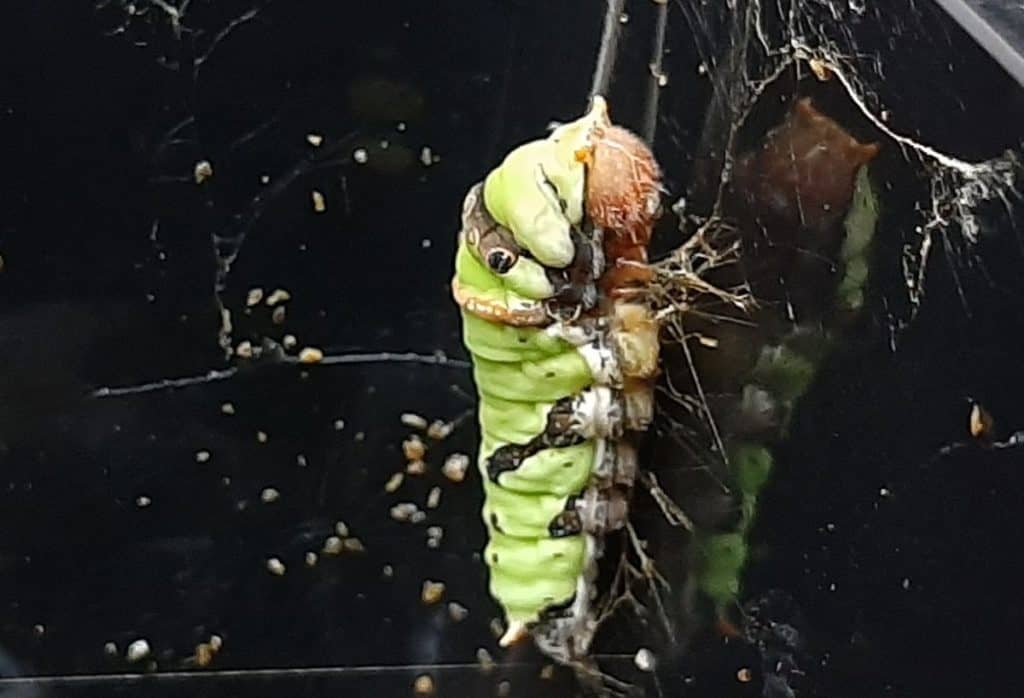
Depending on species, some caterpillars may climb to the wall and pupate, while some may burrow into the soil. Some even pupate in an ant nest (which is not covered in this guide). From the species identification, you should know the behavior of your caterpillar and prepare accordingly.
For species that pupate above ground (with or without cocoons), you have 2 options. If there is only a caterpillar in the container and the container is spacious (2-3 times the wingspan of an adult butterfly/moth in length, width and height), leave it in the same container. Otherwise, transfer the caterpillar into a mesh cage, or a deli container if you plan to release it shortly after it emerged.
If the caterpillar has pupated before you transfer it, gently move it to the mesh cage. It is quite difficult to do this because the pupa is usually stuck on the surface of the container due to the sticky silk. Hence, it is always better for you to transfer the caterpillar before it pupates. If the pupa is attached to a leaf or twig, move the leaf or twig or the portion attaching the pupa into the mesh cage.
For species that pupate in soil, transfer the roaming caterpillar into a container filled with damp soil up to 4” (~10 cm) in depth. The caterpillar will burrow into the soil to search for the best position to build a pupation chamber. Close the container with a lid to prevent escape and make some holes for ventilation.
Do not disturb the soil during this stage because if the pupation chamber is damaged, the pupa may die or emerge with deformity. Do not put too many caterpillars in the same container to avoid them from accidentally destroying each other’s pupation chamber. Once the pupation chamber is formed in a container, do not introduce any new caterpillar to avoid destruction of the chamber by younger caterpillars.
The pupation period generally lasts for weeks or months, depending on the butterfly species. Some species may overwinter as a pupa. Keep the environment moist by misting from time to time.
Housing and Caring for Adult Butterflies and Moths
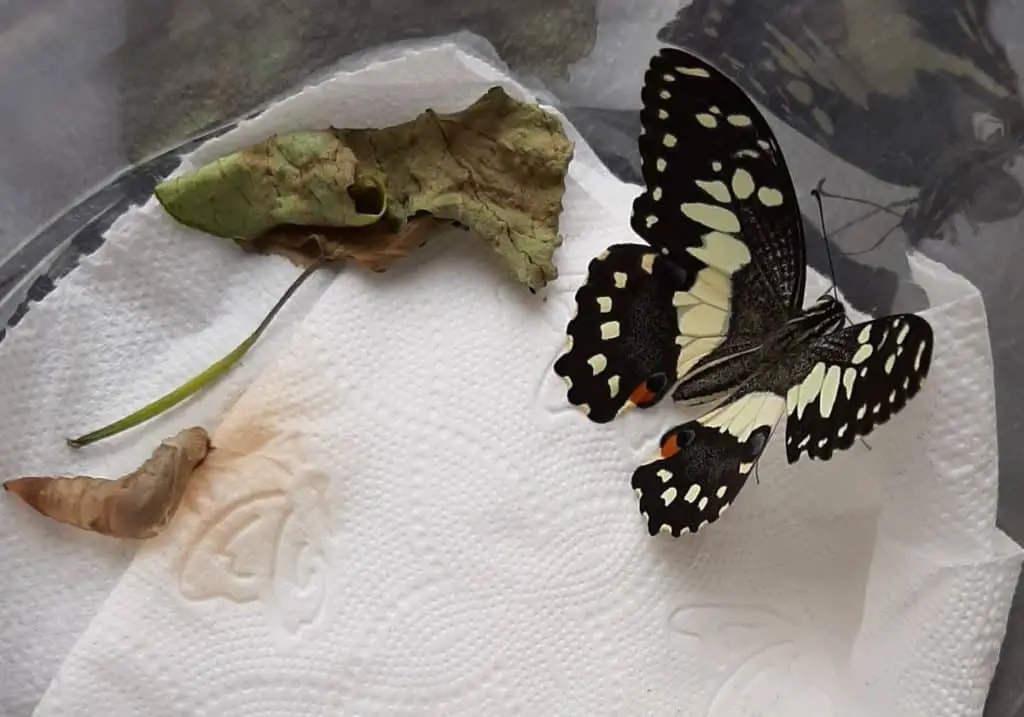
Eventually your pupa will emerge as a butterfly or moth. Do note that the successful emergence rate is not 100%. Factors such as external disturbance, temperature, and humidity may affect the pupation rate.
Butterflies and moths need large space to fly. The cheapest option is to house them in a mesh cage (affiliate link). Put in some twigs and cut flowers as decoration.
If your butterfly or moth requires feeding, you can provide it with syrup water. Mix sugar and water in a 1:9 ratio to produce 10% syrup. Pour the syrup in a small container. Squeeze a cotton ball with a wick. Dampen the cotton ball with syrup and place it over the opening of the syrup container, with the wick touching the syrup. Capillary action will ensure the cotton ball is always wet. Replace the syrup and cotton at least once a week.
The mesh cage should be placed away from direct sunlight. Provide adequate moisture (eg, through mist or wet paper towel) and heat (eg. through light bulb) according to the species-specific needs.
Photoshooting Adult Butterflies and Moths
A newly emerged butterfly or moth has a soft body. They can’t fly until their wings are fully hardened. This is the perfect time to take close up photos with them.
You should not hold the butterfly or moth with your hand because it is fragile. Instead, use a stick or pencil and let the butterfly or moth walk onto it. Then, transfer it to where you want to snap the photo.
Knowledge Covered in this Project
Throughout this project your kid should have observed the behaviors of butterflies or moths and understand how to care for them. You can reinforce their learning by introducing them to the concepts of metamorphosis, molting, the roles of butterflies or moths in nature, and etc.
After the butterfly or moth has died, you can even teach your kids to preserve it following the guide here.

